Design and simulation of capacitive accelerometers
Capacitive accelerometers detect external linear acceleration through capacitance variations measurements. We designed a three-axis accelerometer sensor, to be fabricated through surface micromachining, with a single inertial mass, which has a main extension in a plane and is attached to the substrate by flexural and torsional springs that enable two in-plane translations and an out-of-plane rotation.
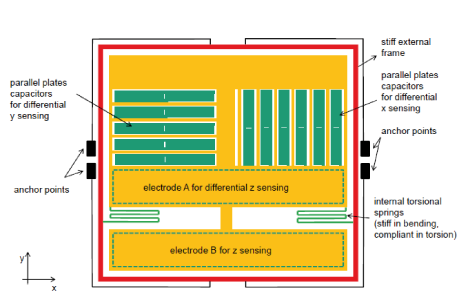 Scheme of the 3-axis capacitive accelerometer
Scheme of the 3-axis capacitive accelerometer
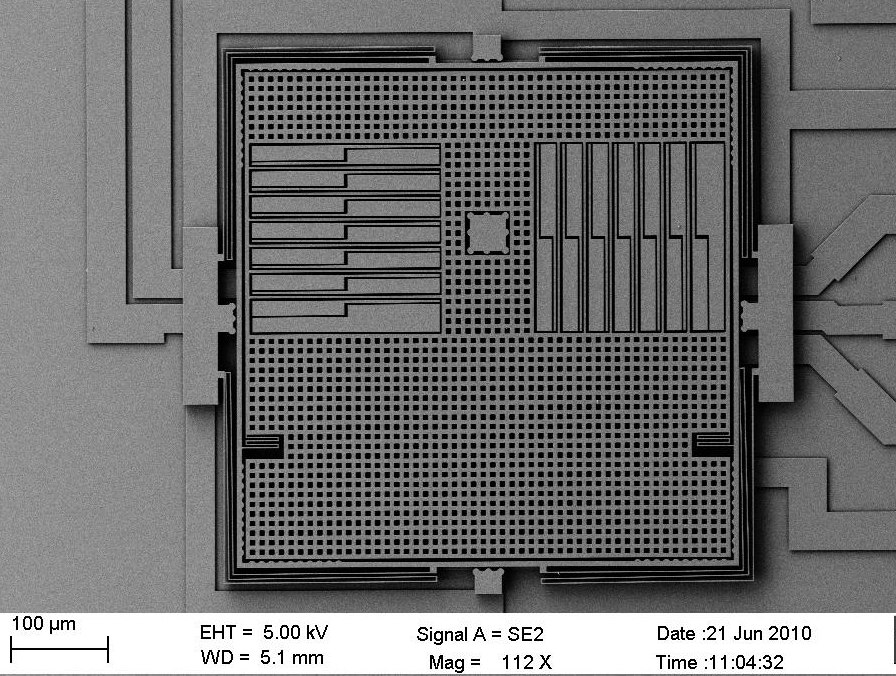 SEM image of the 3-axis capacitive accelerometer
SEM image of the 3-axis capacitive accelerometer
The presence of a single inertial mass enables a considerable reduction of the dimensions of the micromechanical structure and of the corresponding sensor. The device, fabricated through the ThELMA (thick epitaxial layer for microactuators and accelerometers) process of STMicroelectronics, has a maximum size in the xy plane of about 600 × 600 ?m, an out-of-plane thickness of 15 ?m and a sensitivity of 5 fF/g (for a0z) and 7 fF/g (for a0x and a0y). The use of a differential-detection scheme for the three detection axes allows for the achievement of an excellent linearity in the response to the external accelerations and a reduction of the thermal drift.
Design and simulation of resonant accelerometers
Resonant accelerometers detect the external acceleration by measuring frequency variation of a resonating part. The shift in the resonant frequency can be induced by the geometrical stiffness variation or the electrostatic stiffness variation.
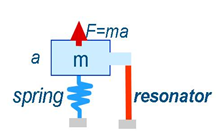 Scheme of a resonant accelerometer
Scheme of a resonant accelerometer
We have proposed a new compact design of a 1-axis resonant accelerometer, based on the geometrical stiffness variation, endowed with higher sensitivity with respect to other literature proposals. The resonator position was optimized to improve the sensitivity. The layout (by a proper design of the electronic part) allows doubling the sensitivity, by measuring the frequency of both resonators. This also improves the linearity of the device. This geometry is less sensitive to spurious effects of thermal loading (an inelastic effect causing pre-stress in the resonators is cancelled when considering the difference between the frequencies).
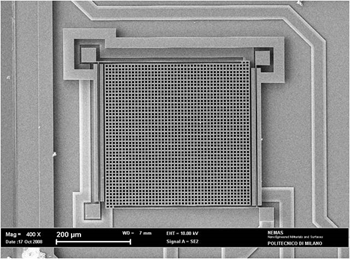 SEM image of the 1-axis resonant accelerometer
SEM image of the 1-axis resonant accelerometer
A similar idea was applied to the compact design of a 2-axis resonant accelerometer with a single mass and folded springs.
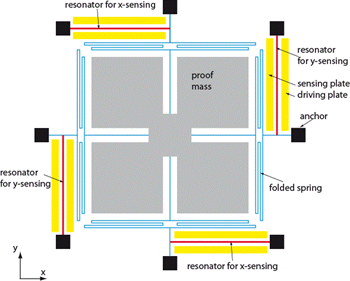
Scheme of the 2-axis resonant accelerometer
The layout leads to very low cross-talking of x-axis and y-axis acceleration signals. The differential layout allows to eliminate pre-stress effects.
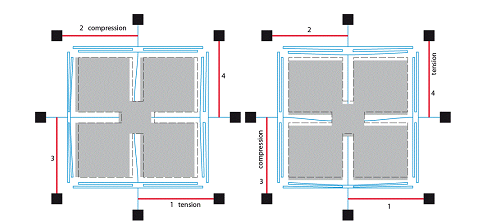
Effect of x-axis and y-axis accelerations
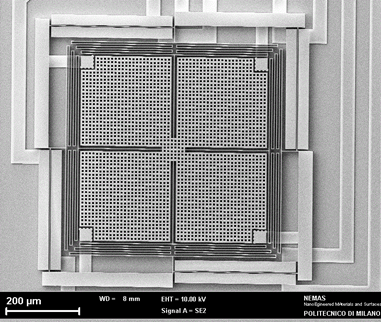
SEM image of the 2-axis resonant accelerometer
We have designed an out-of-plane accelerometer with torsional resonators that makes use of the gap sensitive variation of electrostatic stiffness of the resonators and allows for differential sensing. The differential sensitivity, defined as the shift in resonance frequencies corresponding to a 1g acceleration, obtained by this device, packaged at a pressure of 1mbar and operated at 2.5V is 14 Hz/g. The accelerometer is composed of a suspended planar proof mass, attached to the substrate by two folded torsional springs and two torsional resonators. Driving and sensing of the resonators is achieved by two parallel electrodes attached to the substrate.
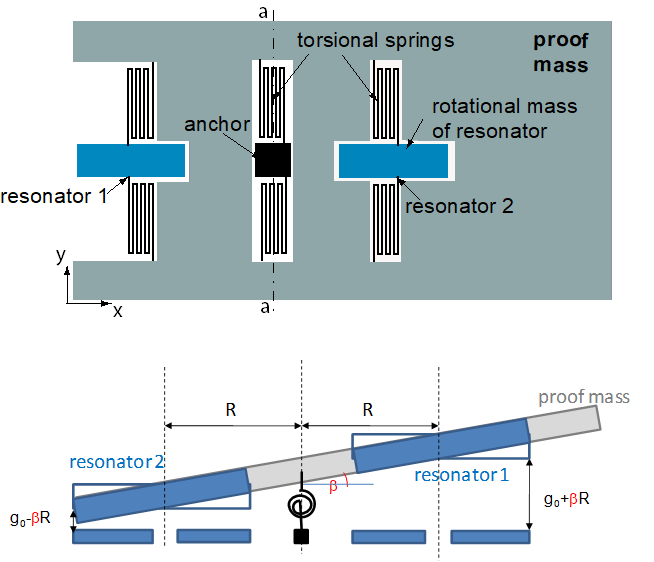
Scheme of the z-axis resonant accelerometer, in plane and section views
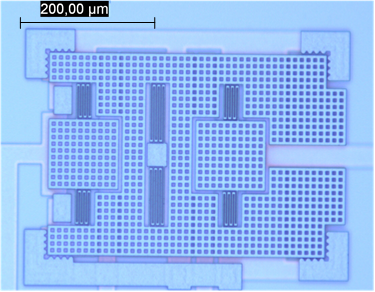
Optical microscope image of the z-axis resonant accelerometer.
